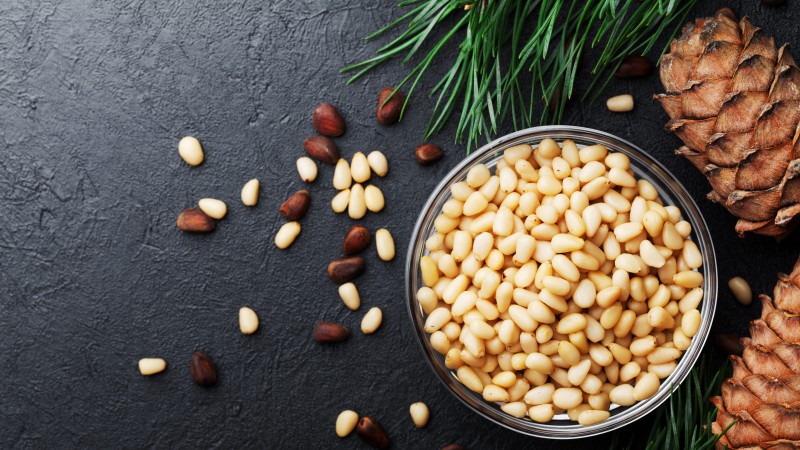Pine nuts: EU increases imports from Russia by 30%
August 22, 2024 at 12:17 PM ,
Der AUDITOR

Global production to increase by 75%
During the congress of the International Nut and Dried Fruit Council (INC) in May 2024 in Vancouver, Canada, experts estimated global production in 2024/2025 at 136,820 mt of in-shell pine nuts, an increase of 75% compared to the previous year. Together with stocks from last year, availability is expected to be 171,990 mt. A significant increase in production is expected in main producing countries such as China (+138.8% to 80,000 mt), North Korea (+33.3% to 20,000 mt) and Russia (+207.7% to 20,000 mt), while a significant decline in crops is anticipated in Turkey (-1.9% to 5,300 mt), Mongolia (-20% to 4,000 mt) and Afghanistan (-47.7% to 2,300 mt).
Stricter regulations in Russia
Alongside China and North Korea, Russia is one of the world's largest suppliers of pine nuts. However, yields from the wild-growing trees are sometimes subject to enormous fluctuations, meaning that the crop has varied between 6,000 mt and 40,000 mt in recent years. In addition, the collection of pine nuts is often associated with high risks, terrain and paths are not secured and exposed to wind and weather, and encounters with wild animals are not uncommon. Some collection points are almost impossible to reach. Companies specialising in the pine nut trade have sometimes leased forest plots or commission local residents to procure them, sometimes in return for advance payment. According to a report by Forbes Russia, however, only 4-6%, or at best 10%, of the nuts are actually harvested for commercial trade each year. Stricter controls and regulations are now planned, which would restrict the commercial trade and, above all, the livelihoods of settlements that rely on the sale of pine nuts. For example, the local authorities are to determine the quantities that can be procured by the local population and new forest plots to be leased will not only be leased to the highest bidder, but these companies must also have a production infrastructure.
In addition to the already low profit margin for the sale of pine nuts, exporters are now also facing higher export duties. These are set to rise to 25% on 1 August 2024 and increase to 50% by 2025.
EU imports down by more than 11%
Since the beginning of this year, 5,030 mt of shelled pine nuts have been imported into EU countries, a decrease of 11.5% compared to the same period last year. At 3,847 mt, more than 76% of shipments come from China, even though imports are down year-on-year, the country remains the most important trading partner. Deliveries from Mongolia (-55.6% to 80 mt) and Kazakhstan (-84.3% to 20 mt) were also down, while the EU significantly increased its imports from important growing countries such as Russia (+30.7% to 570 mt) and Turkey (+276% to 485 mt). The main buyers within the EU were Germany (-26.4% to 2,090 mt) and Italy (-18.5% to 756 mt), followed by the Netherlands (+28.8% to 746 mt), the Czech Republic (+41.8% to 495 mt) and Spain (+24.8% to 418 mt).
|
EU pine nut imports, in mt |
|||
|
Supplier |
2023 |
2024 |
Diff. |
|
China |
4,694 |
3,847 |
-18.0% |
|
Russia |
436 |
570 |
30.7% |
|
Turkey |
129 |
485 |
276.0% |
|
Mongolia |
180 |
80 |
-55.6% |
|
Kazakhstan |
127 |
20 |
-84.3% |
|
Others |
116 |
28 |
-75.9% |
|
Total |
5,682 |
5,030 |
-11.5% |
|
DG AGRI TAXUD Customs Surveillance System, 01/01-19/08 08029200 Fresh or dried pine nuts, shelled |
|||
View more
- price charts for pine nuts from China
- price chart for nuts, oilseeds and grains and many more products





